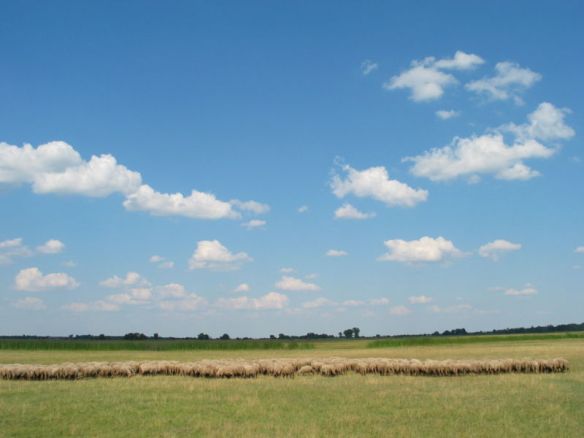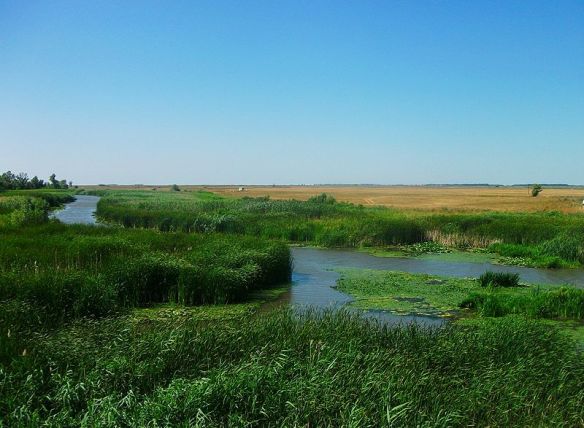When I think of World Heritage Sites in Hungary, I think of history, culture and architecture. Foremost among these are two places that could not be more different. Budapest, along the banks of the Danube and the quintessentially Hungarian village of Holloko, tucked into an obscure valley deep in the Cserhat Mountains. The riverfront in Budapest evokes the most splendid European cityscape imaginable while Holloko conjures up thoughts of age old traditions and images of spectacular quaintness. Budapest and Holloko are respectively the best of urban and rural Hungary. They also happen to be World Heritage Sites because of their outstanding intrinsic value. These are the places that come to mind for most of those who have spent time in Hungary’s capital as well as its hinterlands.
As for spaces, geological, biological and ecological, it is much more difficult to find world class landscapes in the country. Hungary’s most well-known natural wonder, the inland sea of Lake Balaton, does not enjoy World Heritage Site status, but there are several natural areas that do. The most surprising of these I discovered in an area one would not normally associated with natural wonders. It was to be found on the Great Hungarian Plain in the eastern part of the country. Covered by an ocean of short grass, marked by sublime flatness, dotted with shimmering wetlands and set beneath an incomprehensibly huge sky, lies the Hortobagy. It is Hungary’s first national park, as well as an International Biosphere Reserve and World Heritage Site. Ironically this vast and expansive landscape was historically viewed by travelers as a formidable wasteland. Today, it is sought out as a destination by tens of thousands of tourists.

A Wilderness Sublime – Sheep grazing on the Hortobagy
Magical Bleakness – A Land Without Limits
A land of mysticism, mirages and melancholy, where time and distance take on an entirely different meaning, the Hortobagy is a landscape that seems to have neither an end nor a beginning. If the infinite exists on earth, than I just might be able to find it out on the Hortobagy. A land without limits, it was billed as much a state of mind, as a place. The park inhabits what might be termed an in between space. Famously noted by travelers as treacherous to cross due to searing heat, icy winds or freezing cold, bandits and a decided lack of natural landmarks. It was a place for nomadic herdsmen to graze cattle and sheep across vast expanses of land underlain by alkali soils. Inhospitable, mostly uninhabitable and hardly worth cultivating other than for stock raising, the Hortobagy was difficult to avoid for those traveling across eastern Hungary and even more impossible to forget.
In Hungary, the Hortobagy and surrounding land on the Great Plain is also known as the puszta, a term that is synonymous with emptiness. Though remarkably bleak, it is an entrancing landscape. Out on the puszta, the sky is so large and land so vacant that it is difficult to discern where horizons begin or end. Strangely enough, this also leads to optical illusions which gives the Hortobagy a magical quality. The kind of landscape where myths are shaped out of torpid air and mirages have been known to materialize on humid summer days. Historical accounts tell of travelers dazzled by illusion and disillusion. Some have reported seeing cities spring from the clouds, while others have sighted fantastical palaces forming in the near distance. These are but a few examples of the imaginary formations that appear without warning.

Laid Over The Land – Hortobagy River in the National Park (Credit: Wikipedia)
A Mesmerizing Isolation – Outer Space On Earth
The natural history of the Hortobagy is inseparable from the Tisza River, which is now dammed and held in a large lake to the west of the national park. While the mighty Tisza is now relatively tame, it long since left a distinctive mark upon the landscape. The alkali soil, the main component of the Hortobagy’s barren landscape, was deposited over ten thousand years ago by a wilder version of the Tisza. Back then, massive herds of wild animals roamed across the area, Later, domesticated animals grazed these grasslands into submission. The same processes still take place today on a much smaller scale. To witness the timeless rituals of nature, animal and man interacting in this sublime landscape, my future wife and I traveled by train from Debrecen to the small village of Hortobagy. This was where we entered Hortobagy National Park, paying to take a wagon out onto the expansive flatlands.
My initial impression of the Hortobagy could best be summed up as “nowhere to hide.” The plain expanded exponentially in every direction. The only vegetation to be seen, other than grass, were hazy clumps of tiny trees. These were so far away as to be barely discernible. It was difficult to tell if the horizon was ten or ten thousand miles in the distance. The further we traveled, the further away the horizon stretched. Everyone and everything, whether natural or manmade, was reduced to insignificance by the sky. A few minutes after leaving the village behind, I felt as those we had entered outer space on earth. The wagon was moving, but I had the sensation that it was going nowhere. The horses pulling it were running to stand still. The openness was mesmerizing and at the same time isolating. It was world unto itself.

Heading out to the Hortabagy – Hungarian cowboy on a wagon cart
Heading out to the Hortabagy – Hungarian cowboy on a wagon cart
The Wilderness Sublime – A Land Of Illusion
The idea that the Hortobagy was in the same country as Budapest seemed impossible. This felt like the most remote frontier I had ever visited. Light years away from the rest of Hungary. This land made me believe, if just for a moment, that nothing else existed outside of it. It was mind boggling to think that Debrecen was only a forty-minute car ride to the west. The otherworldly quality of the landscape was largely due to it being filled by absence rather than presence. The wagon had transported us to an entirely different universe, one where time hardly existed. I began to wonder if any living entity could stand to live here for very long. The lack of life, like so many things with the Hortobagy, turned out to be an illusion. People and animals had been integral to the region since time immemorial. As I was about to discover, they still were.
